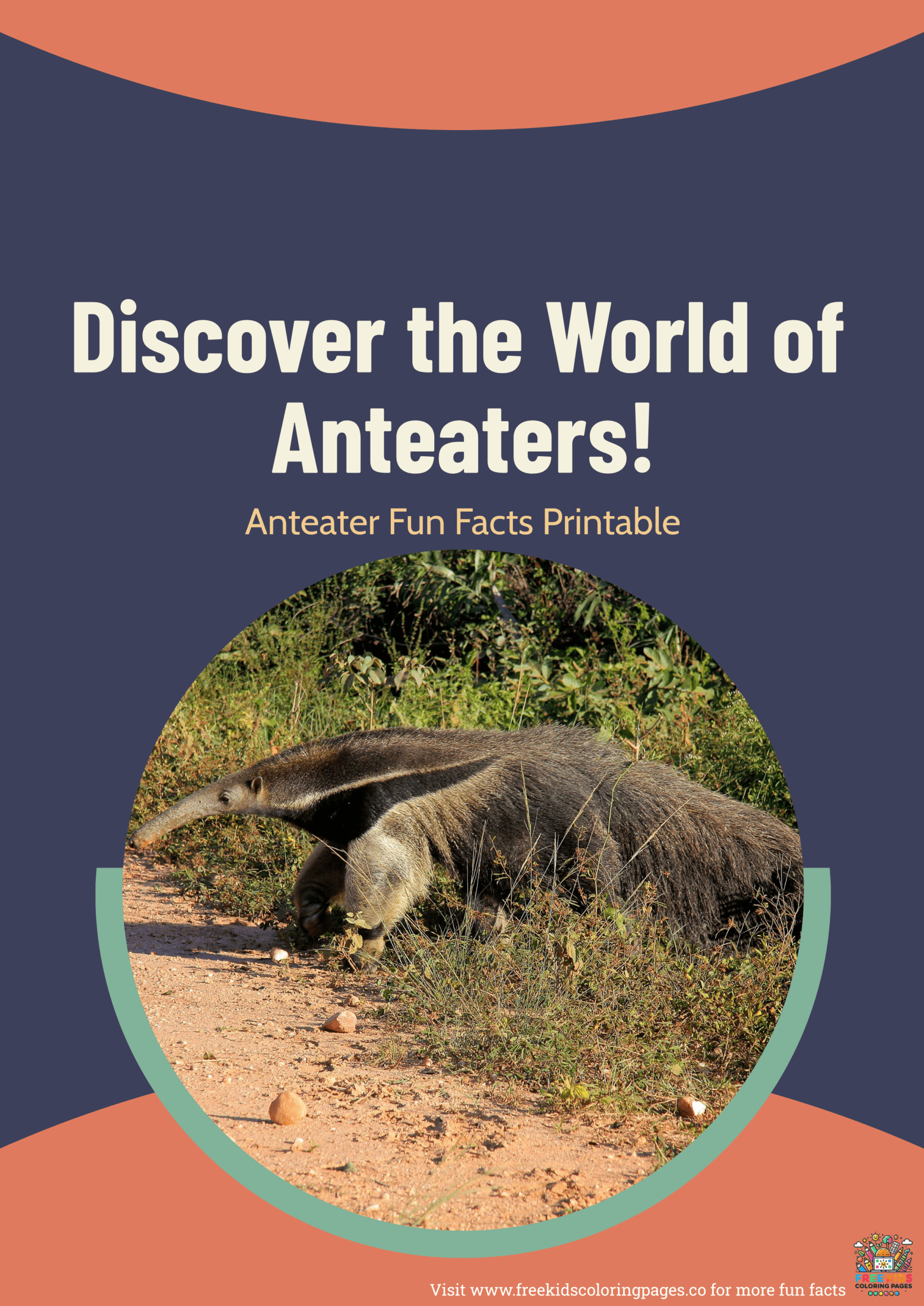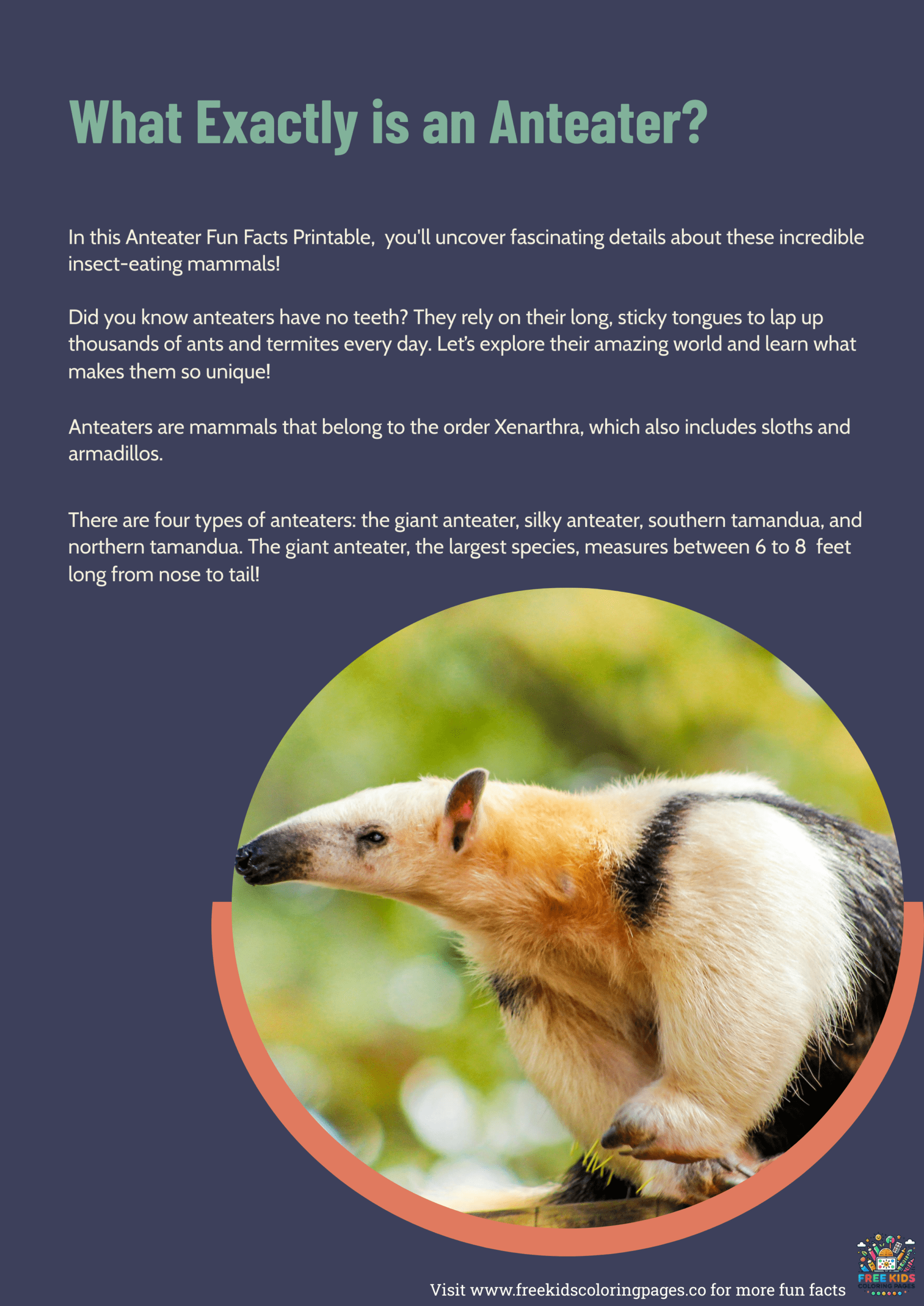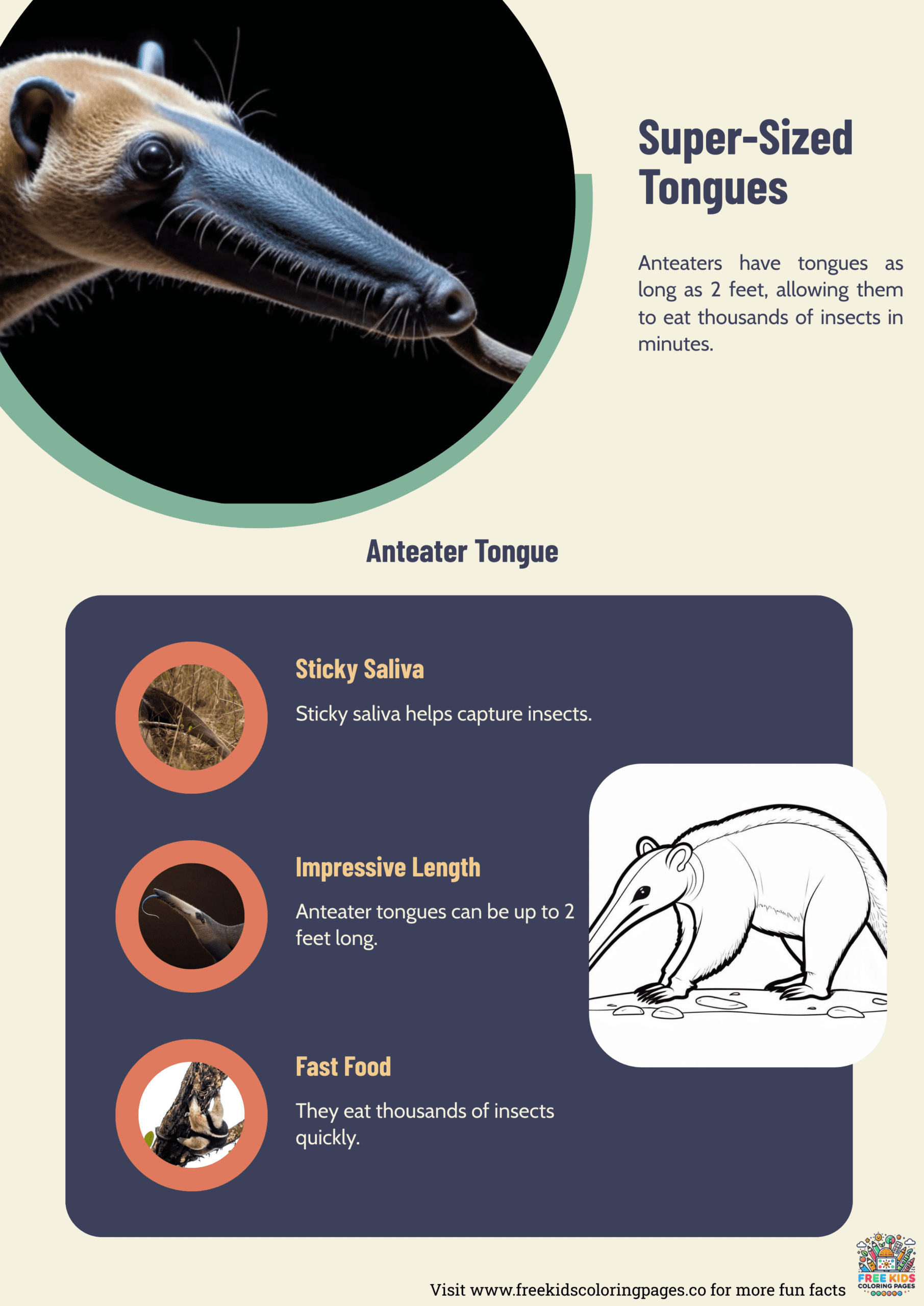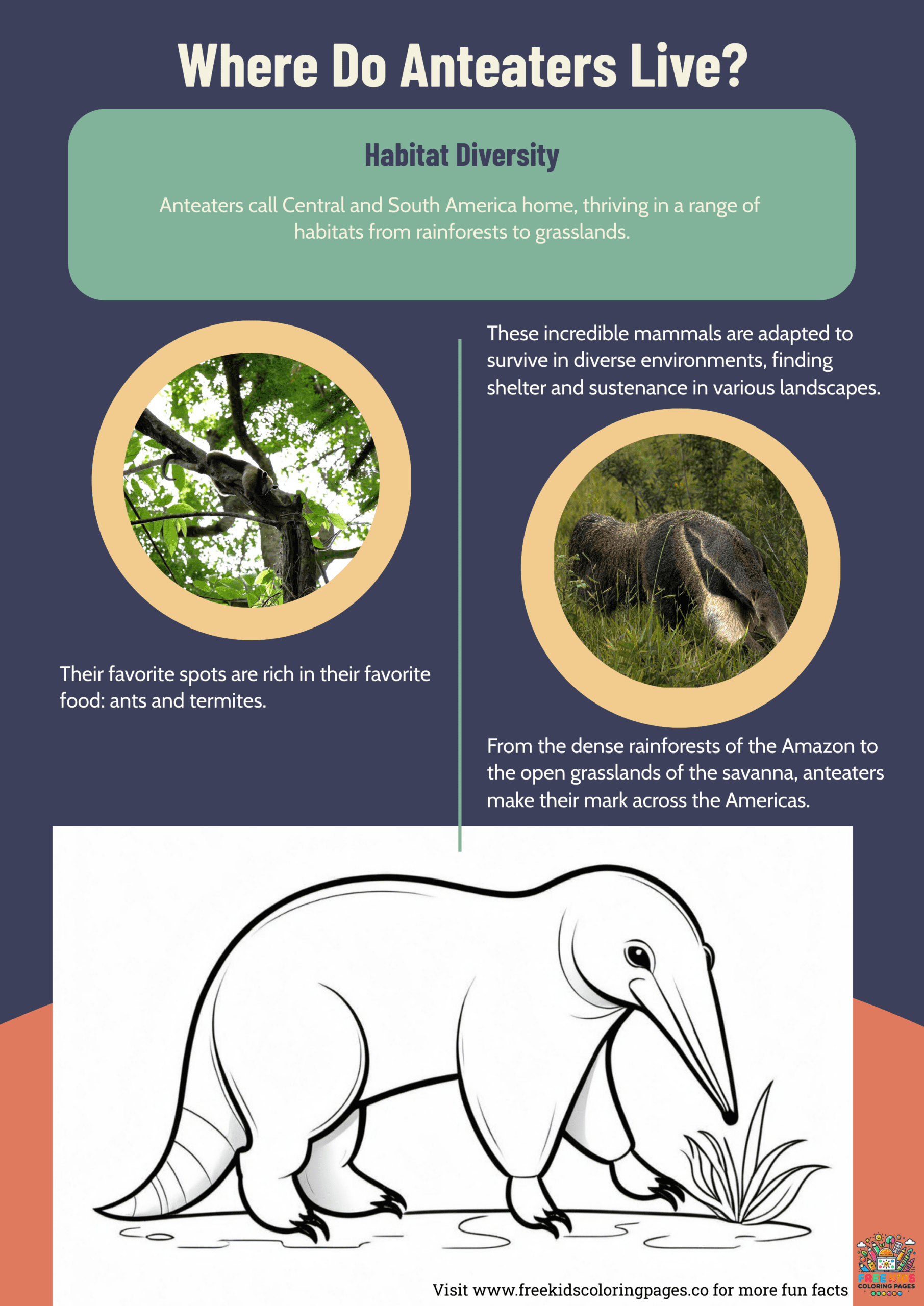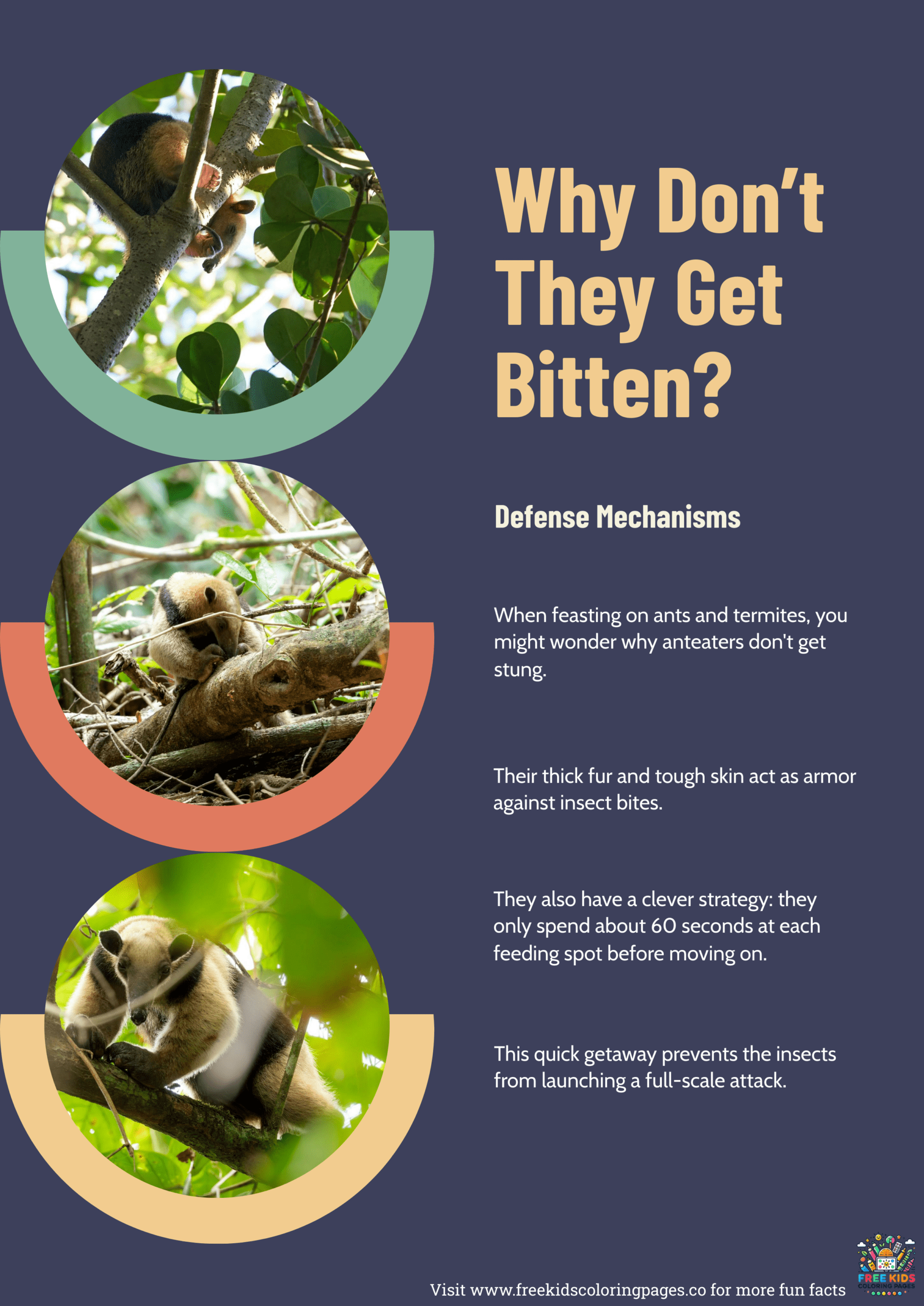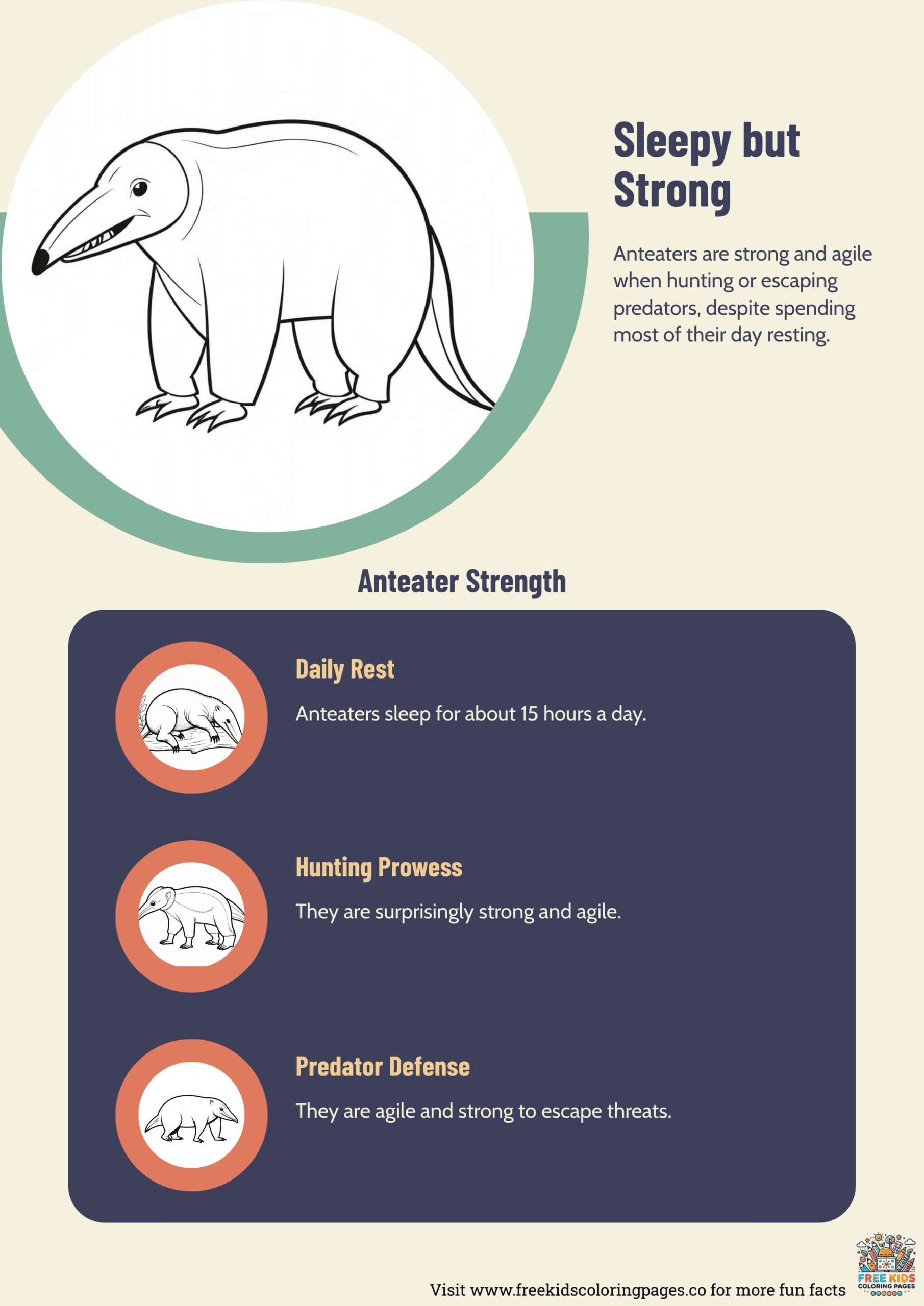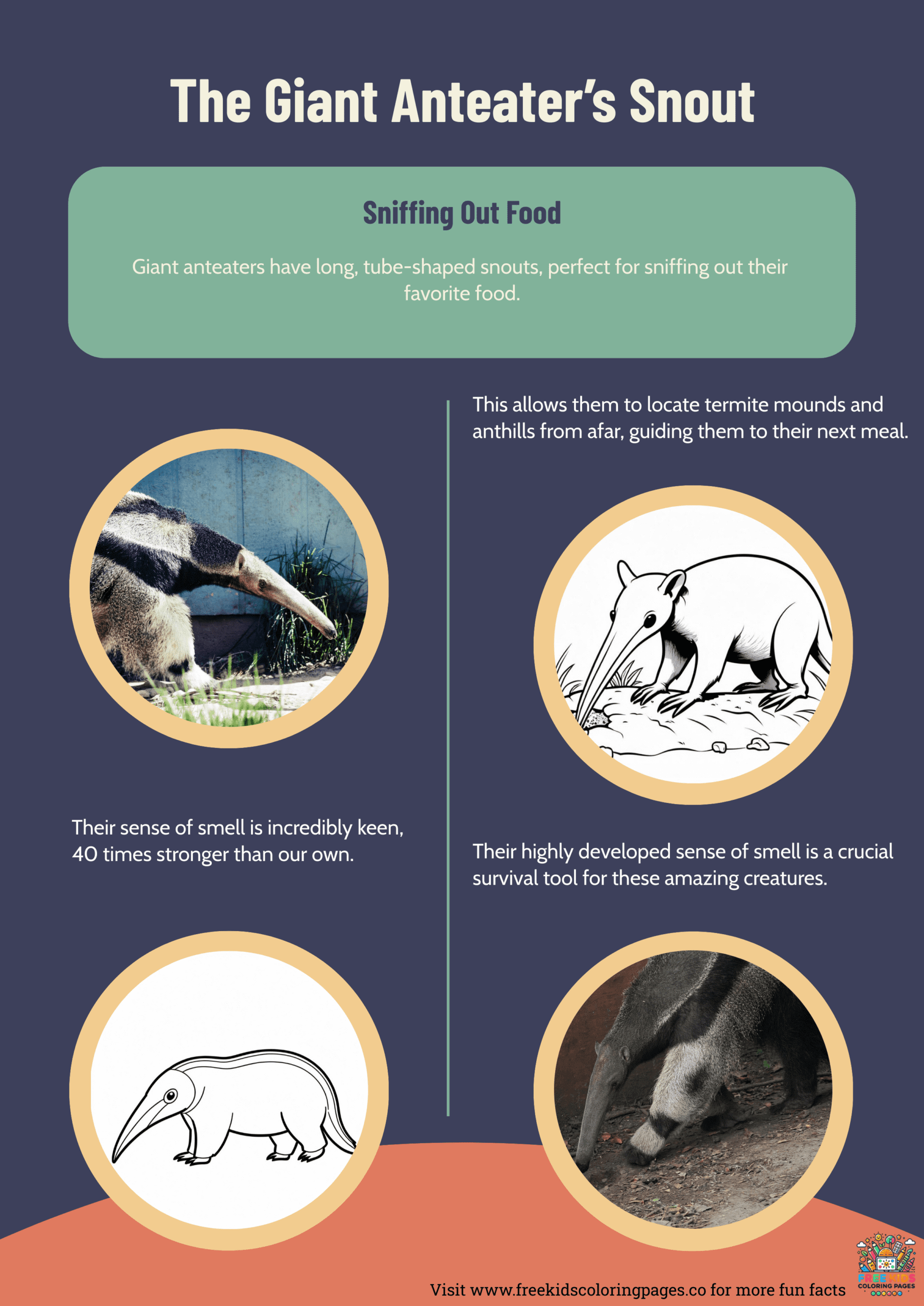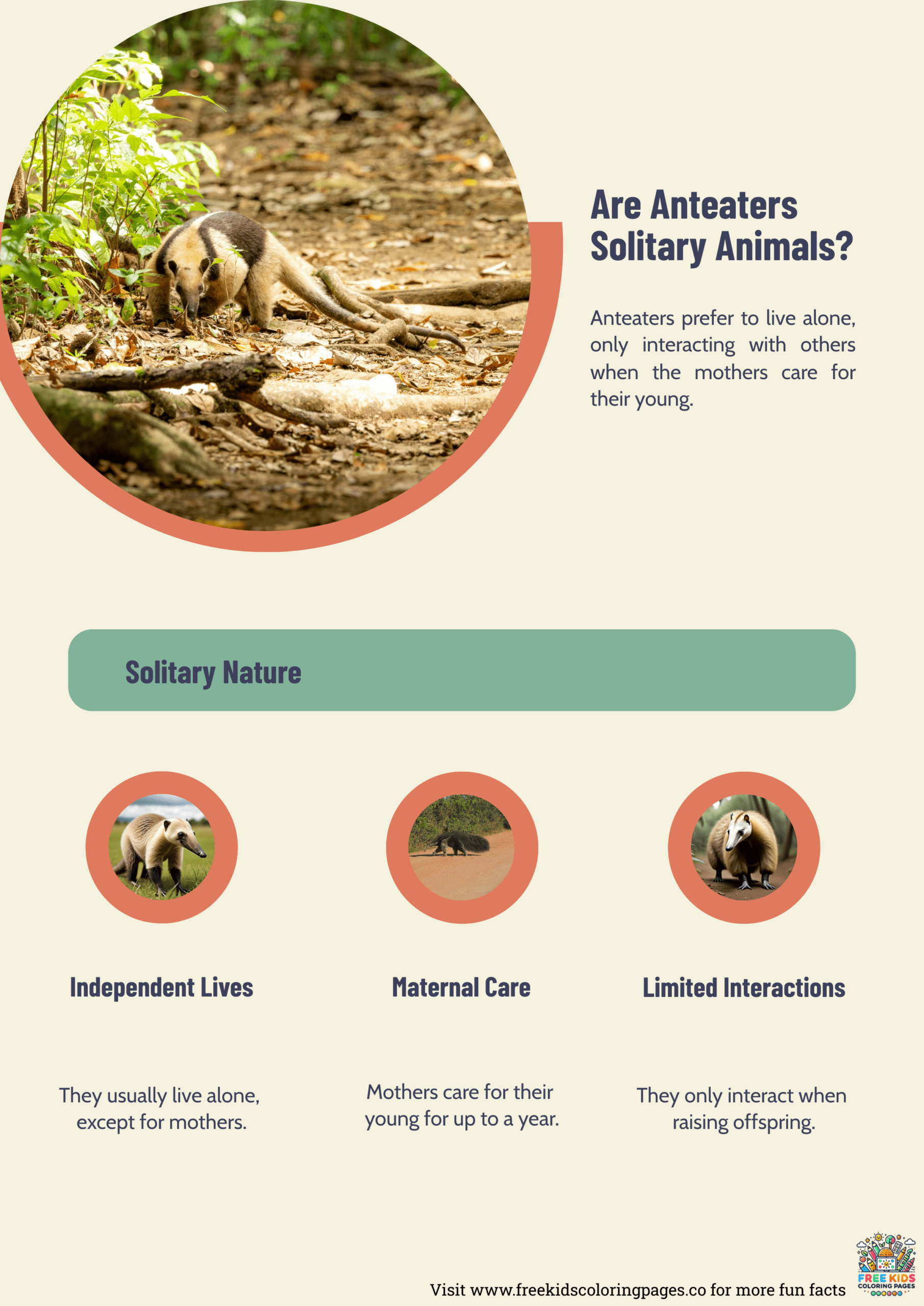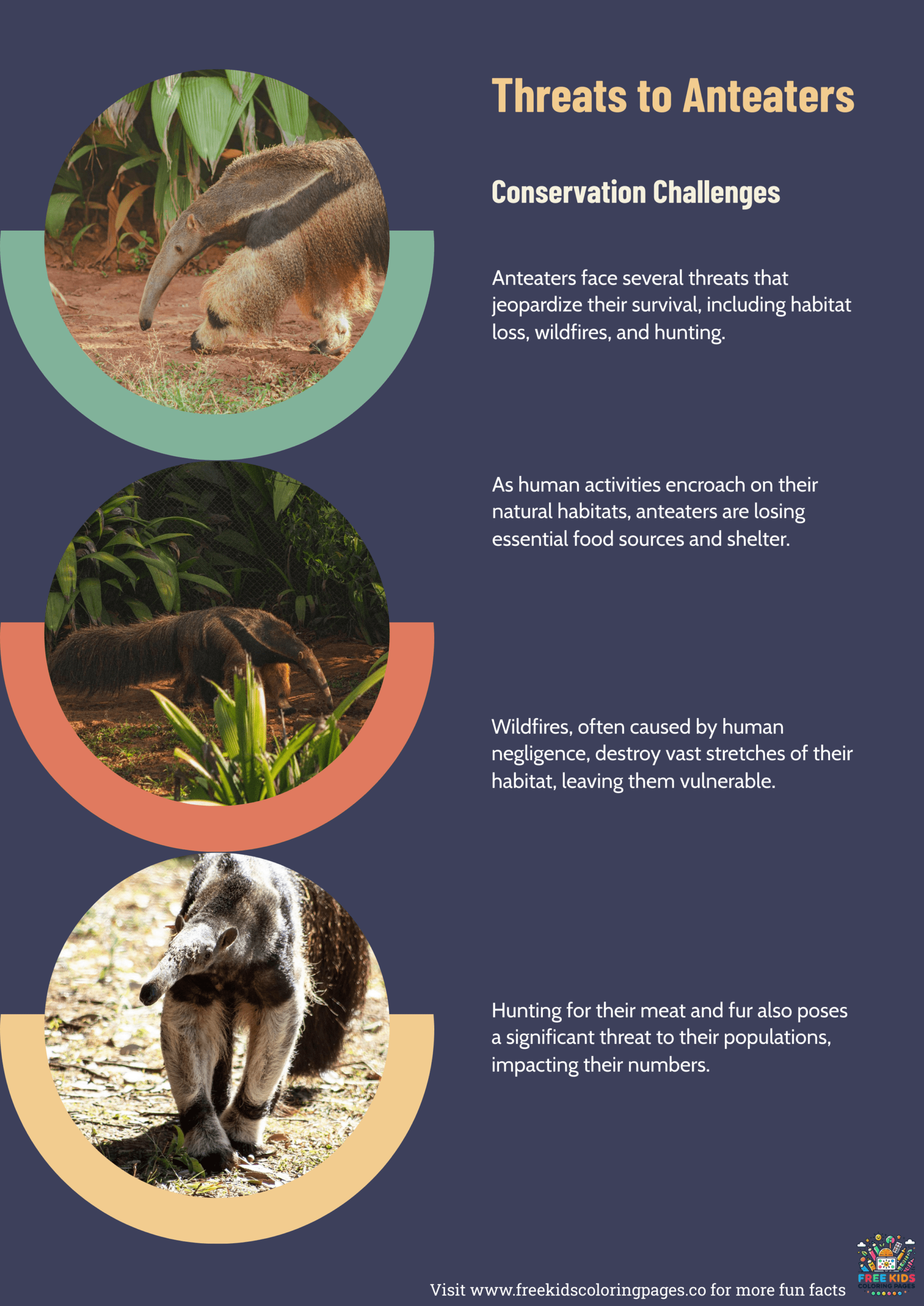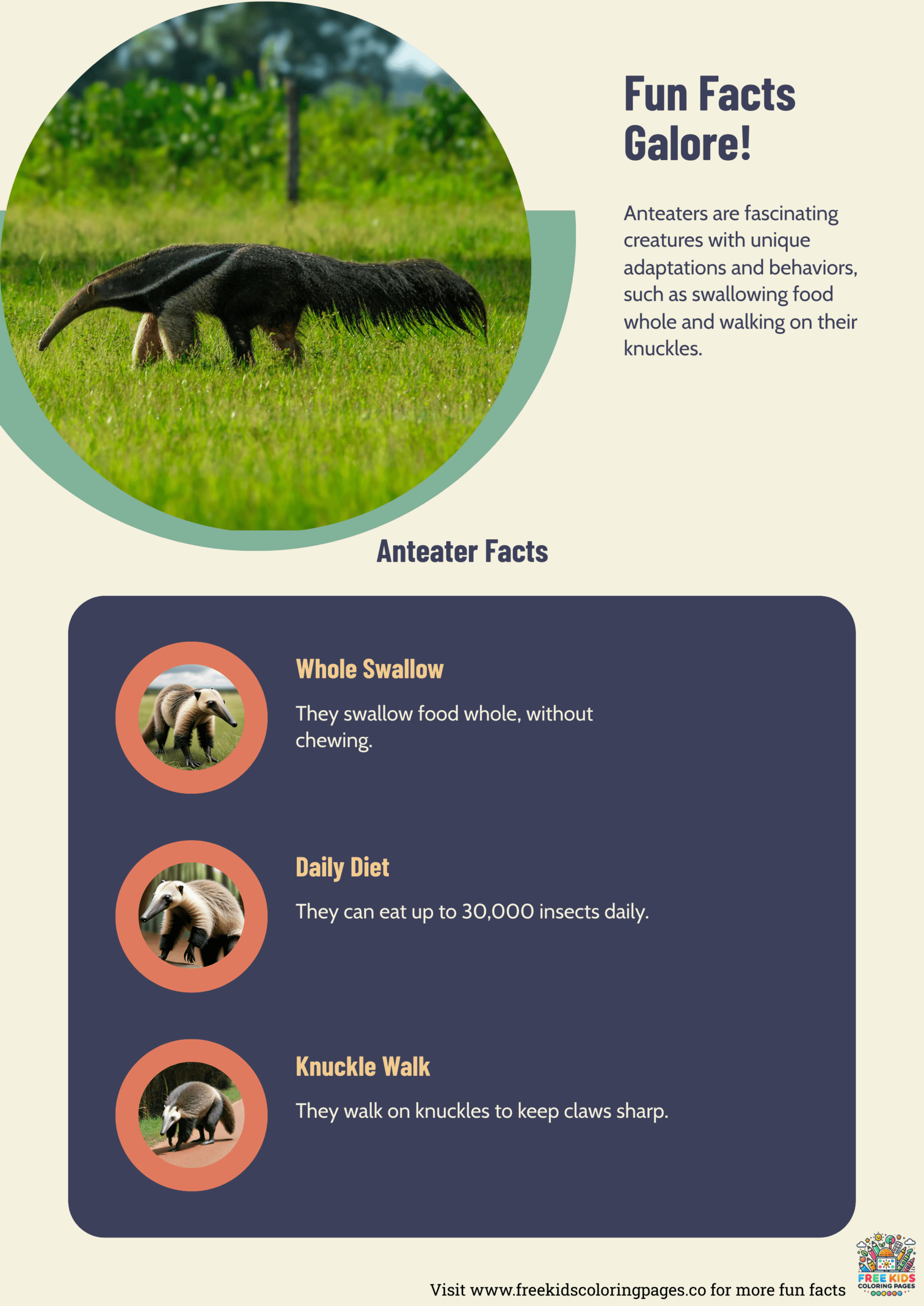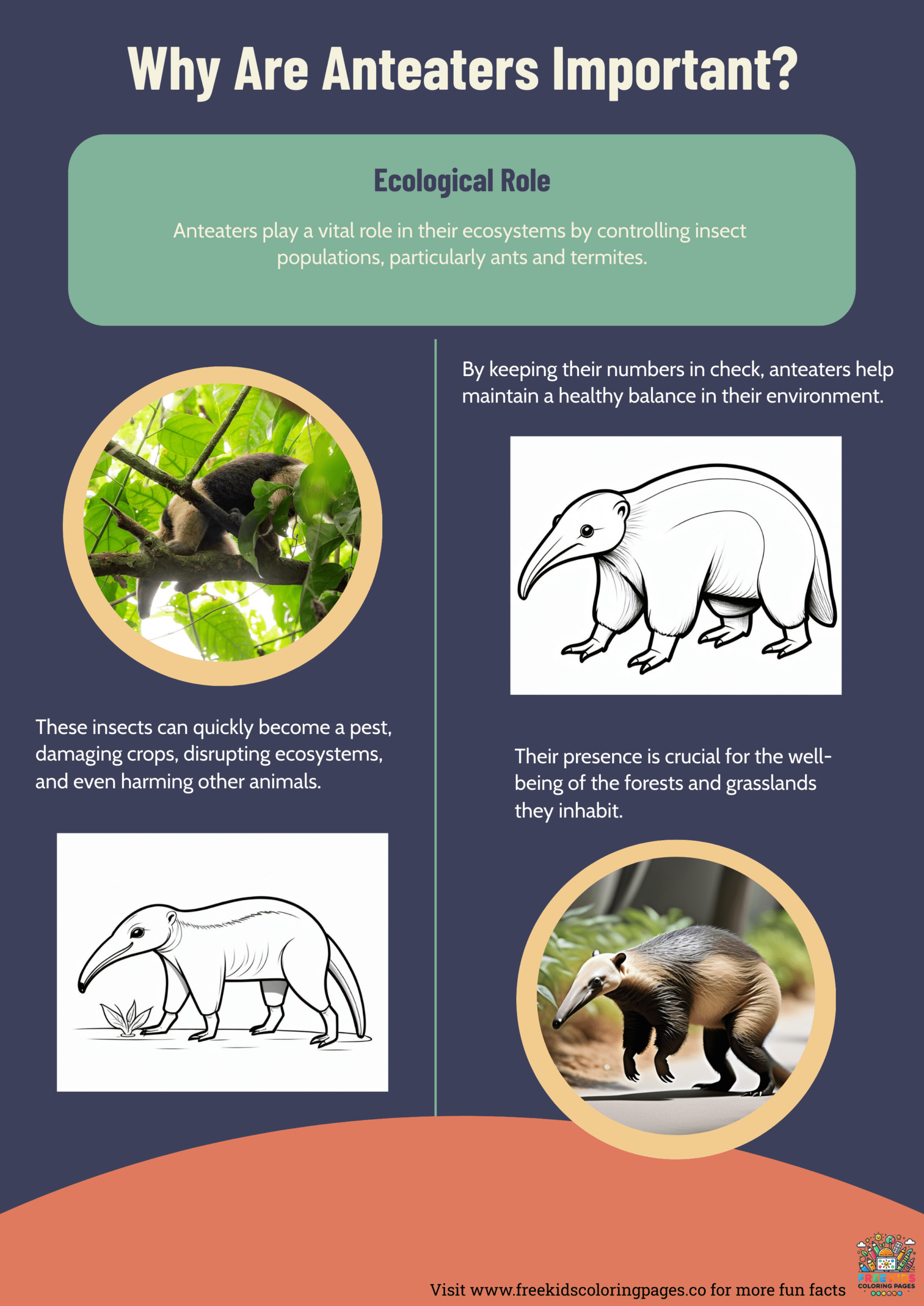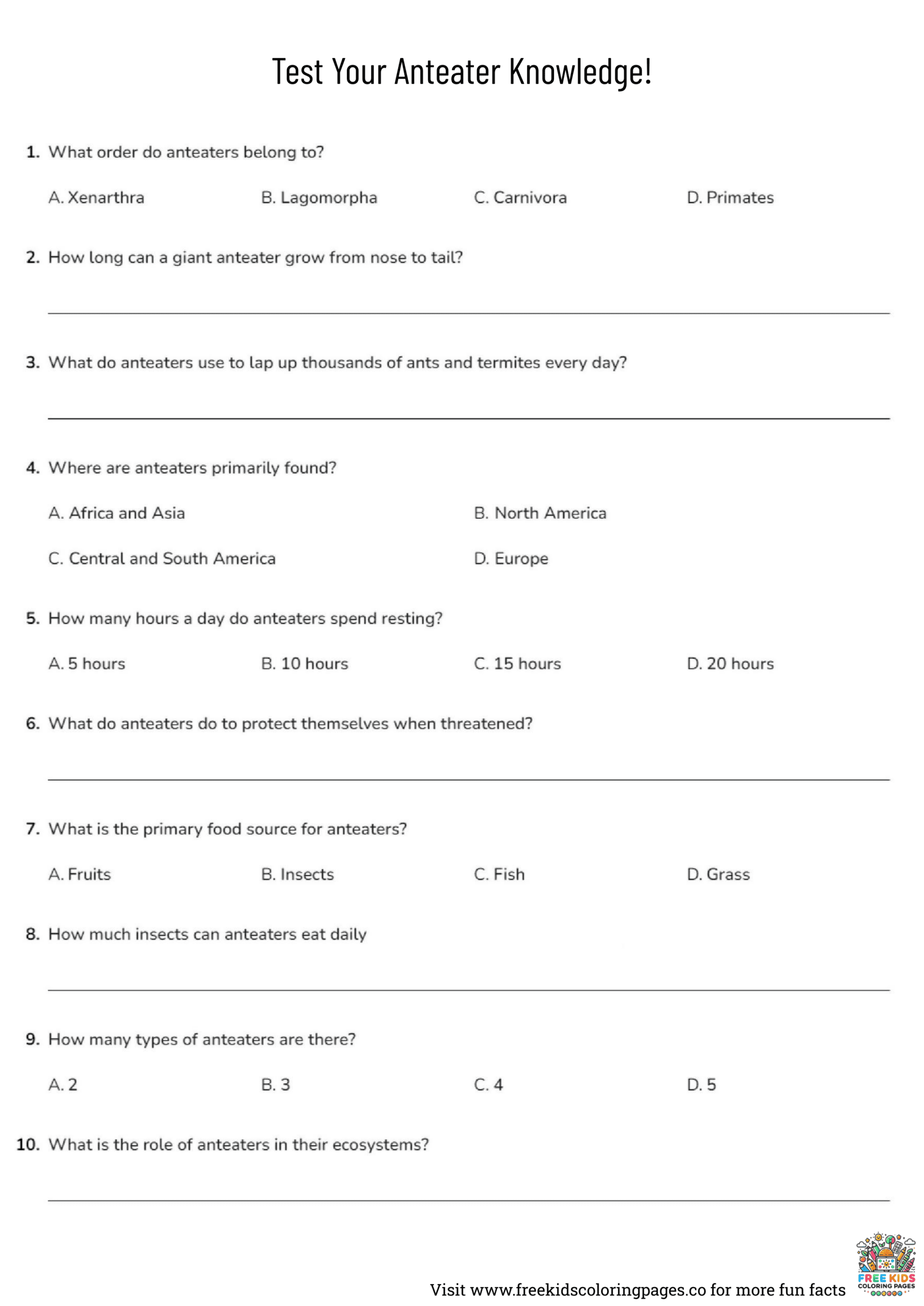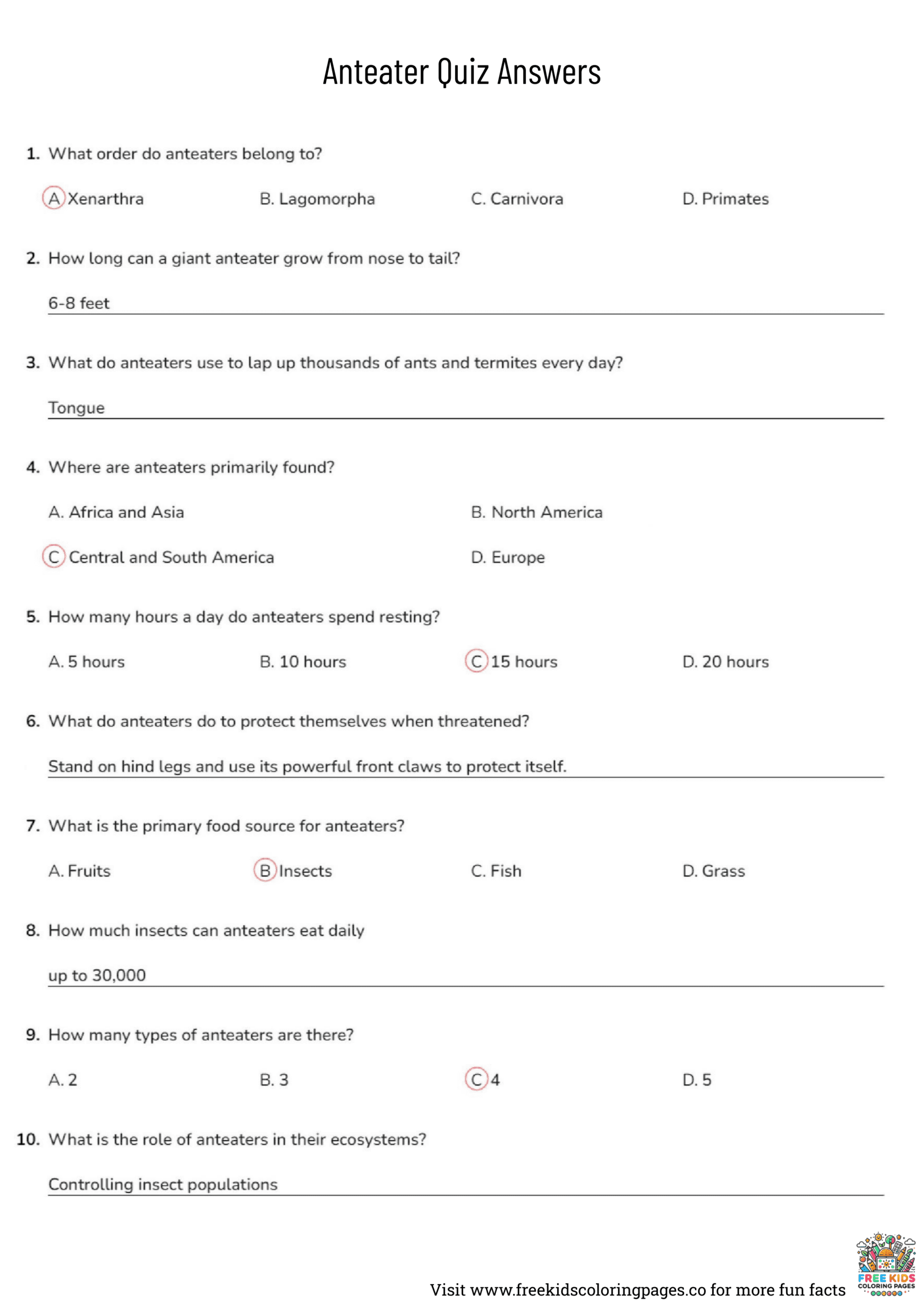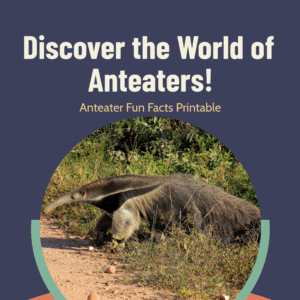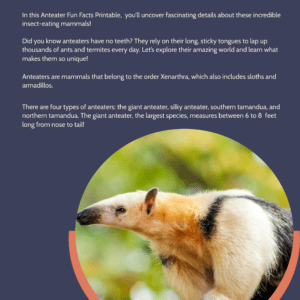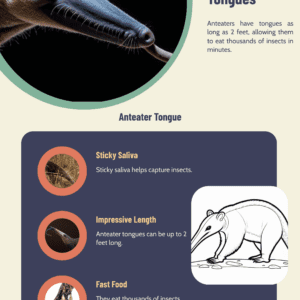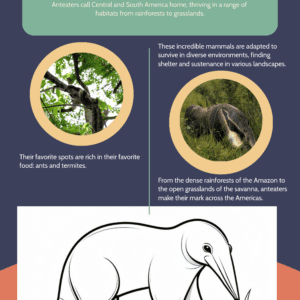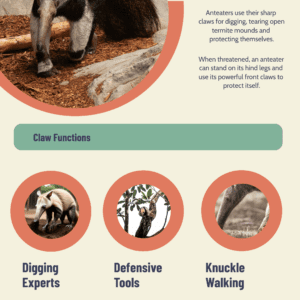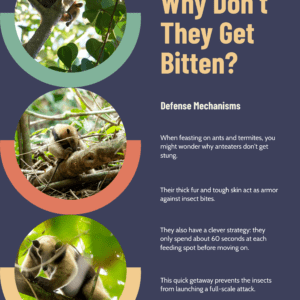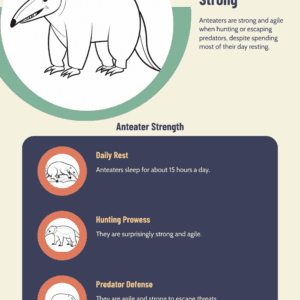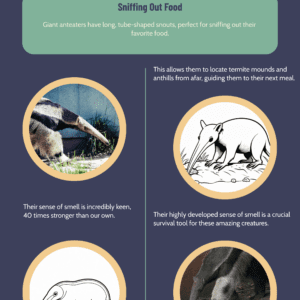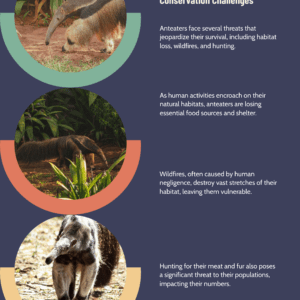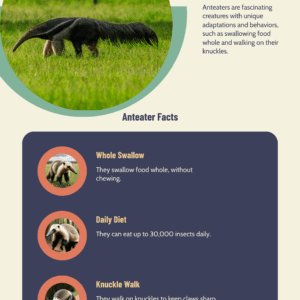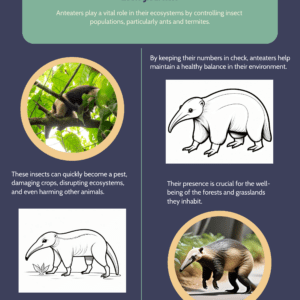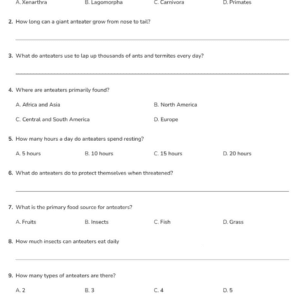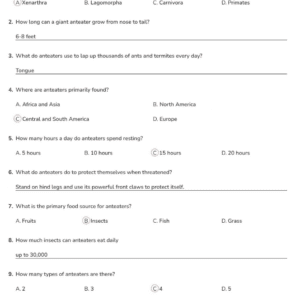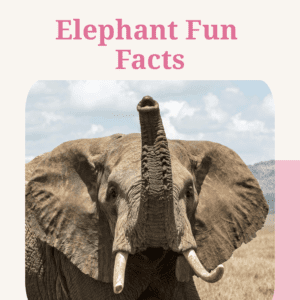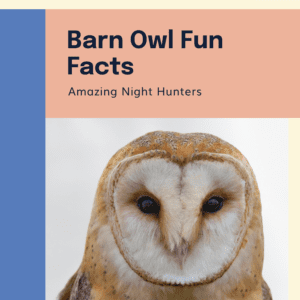Welcome to the Anteater Fun Facts Printable, where you’ll uncover fascinating details about these incredible insect-eating mammals! Did you know anteaters have no teeth? They rely on their long, sticky tongues to lap up thousands of ants and termites every day. Let’s dive into their amazing world and learn what makes them so unique!
What Exactly is an Anteater?
Anteaters are mammals that belong to the order Xenarthra, which also includes sloths and armadillos. There are four types of anteaters: the giant anteater, silky anteater, southern tamandua, and northern tamandua. The giant anteater, the largest species, can grow up to 7 feet long from nose to tail!
Super-Sized Tongues
One of the coolest things about anteaters is their tongues. Their tongues can be as long as 2 feet, allowing them to reach deep into anthills and termite mounds. With sticky saliva coating their tongues, they can capture thousands of insects in minutes—talk about fast food!
Where Do Anteaters Live?
Anteaters can be found in Central and South America, living in various habitats, from rainforests to grasslands. Their favorite spots are places rich in ants and termites. The Anteater Fun Facts Printable teaches you all about their homes and how they adapt to survive in the wild.
Incredible Digging Skills
Anteaters are equipped with sharp claws that help them tear open termite mounds and anthills. But they don’t just use their claws for digging—they’re also handy for defense. When threatened, an anteater can stand on its hind legs and use its powerful front claws to protect itself.
Why Don’t They Get Bitten?
When eating ants and termites, you might wonder why anteaters don’t get stung. Their thick fur and tough skin protect them from insect bites. Plus, they only spend about 60 seconds at each feeding spot, making a quick getaway before the insects can fight back.
Sleepy but Strong
Anteaters may seem sleepy—they spend about 15 hours a day resting! Despite their relaxed nature, they are strong and agile when hunting for food or escaping predators. The Anteater Fun Facts Printable explores how their behavior helps them survive in the wild.
The Giant Anteater’s Snout
Giant anteaters have long, tube-shaped snouts that are perfect for sniffing out food. Their keen sense of smell is 40 times stronger than ours, helping them locate anthills from far away.
Are Anteaters Solitary Animals?
Yes! Anteaters prefer to live alone. The only time they spend with others is when mothers care for their young. Baby anteaters are adorable and often ride on their mother’s back for up to a year.
Threats to Anteaters
Unfortunately, anteaters face threats like habitat loss, wildfires, and hunting. The Anteater Fun Facts Printable explains how conservation efforts are helping protect these unique creatures. Learning about their challenges can inspire us to take action to save them.
Fun Facts Galore!
- Anteaters don’t chew their food—they swallow it whole!
- Giant anteaters can eat up to 30,000 ants and termites in a single day.
- They walk on their knuckles to keep their claws sharp and ready for action.
Why Are Anteaters Important?
Anteaters play a vital role in their ecosystems by controlling insect populations. Without them, ant and termite numbers could grow out of control, affecting plants and other animals.
Be an Anteater Expert!
With the Anteater Fun Facts Printable, you’ll learn everything from their incredible adaptations to their essential role in the environment. Start exploring and become an anteater expert today!

